Bargaineer
Role: Product Design, Brand Design
Tools: Figma, Adobe Creative Suite, Microsoft Suite
While at Bargaineer, I trippled selling channels, increase customer recognition, and drove sales through product design, brand strategy, and marketing. Through this, we saw an ROI of over 600%.
Bargaineer, formally known as Sale Boat, was looking gain market share in the discount retail space and grow its sales. Through a rebrand and a unique selling strategy, growth is increasing along with brand recognition and customer satisfaction.
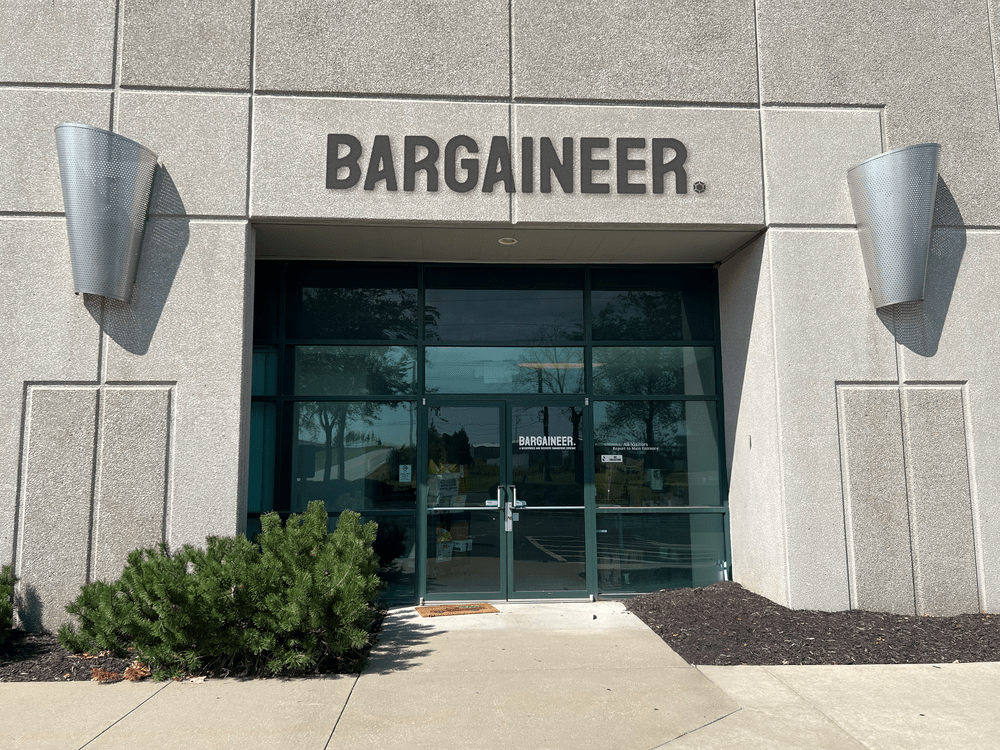
Background
Company Overview
Bargaineer is a discount retailer of liquidation, recommerce, recovery management, and consignment goods. They strive to keep good products in the hands of customers and out of landfills while working with customers to give them the best price.
Problem
Sale Boat had a steady income but was struggling to push to the next level of revenue. Throughout this case study, we will go through a few of the strategies I implemented to help solve this problem.
Challenge
With such a small team, I was the sole designer, marketer, and advertiser while also helping with additional laborous warehouse tasks. I needed to balence the creative needs with the labor intensive tasks in addition to justifying designs needs to management.
Solution
To increase revenue streams and set ourselves apart from our competitors, I launched an e-commerce site that would allow us to reach new audiences while increasing sales and decreasing fee associated costs. I was also a pivotal part implementing our in-store buying experience.
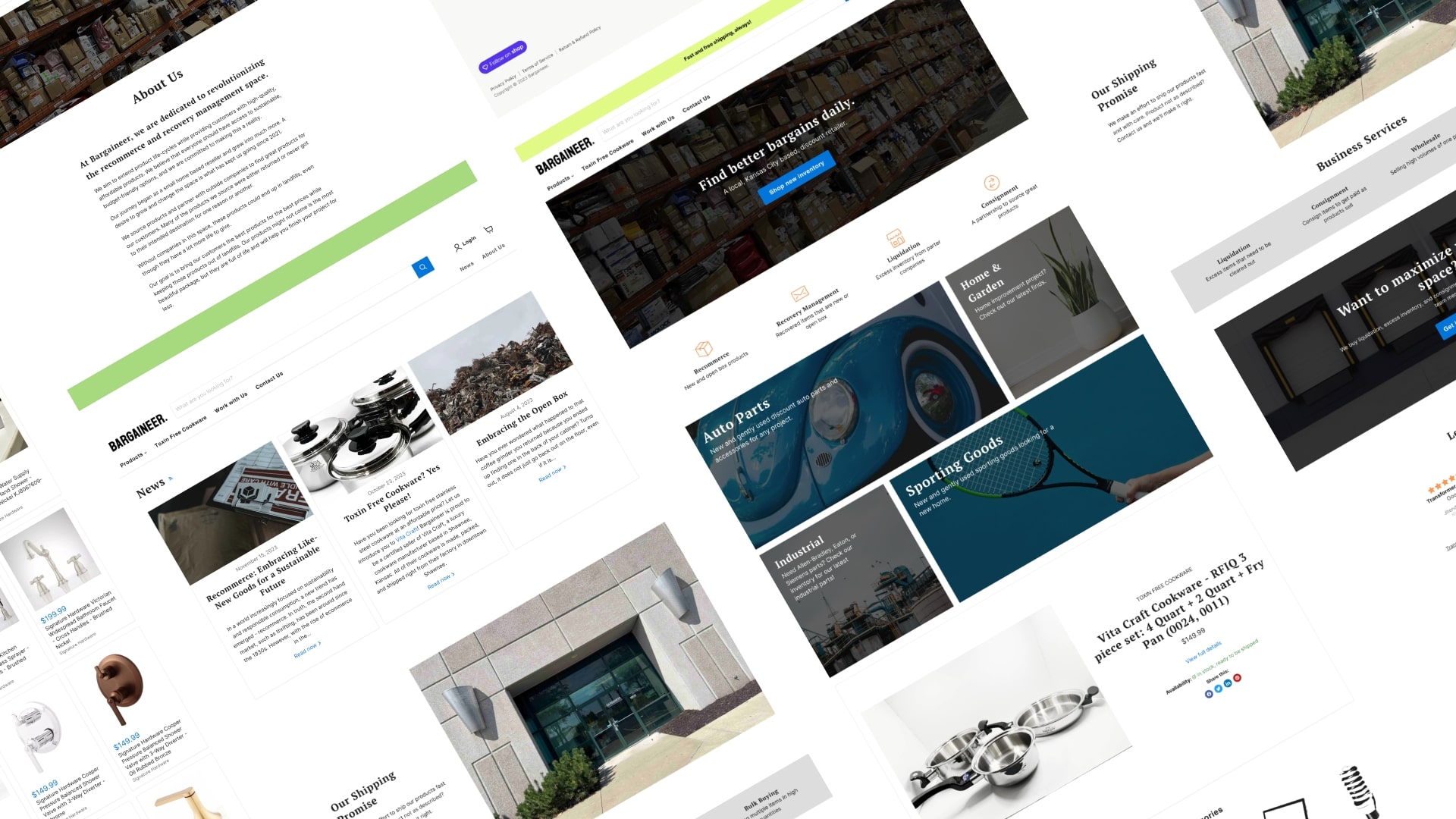
Process
OBJECTIVES
First, understanding the current business
When I started, Sale Boat had one selling platform in use, eBay. They would source, list, pack, and repeat. With only two people, time and ability was limited. The first thing I noticed was that the business had no information available for people to reference, and that people had a hard time understanding the business without seeing the name. Think sale versus sail (we were asked if we sold boats too many times to count). This was my starting point.
RESEARCH
Product market fit analysis & discovery
Because Bargaineer was not reaching enough customers, I began my research by looking at our competitors. The end goal was to gain market share in the reselling/discount retail space, however, since the brand was not well know throughout the Kansas City area, this was going to be a challenge. As a result of my research, I found that our main competitors did not have direct online purchase options and that all these businesses had physical locations (this gave us the idea for an in-store buying option).
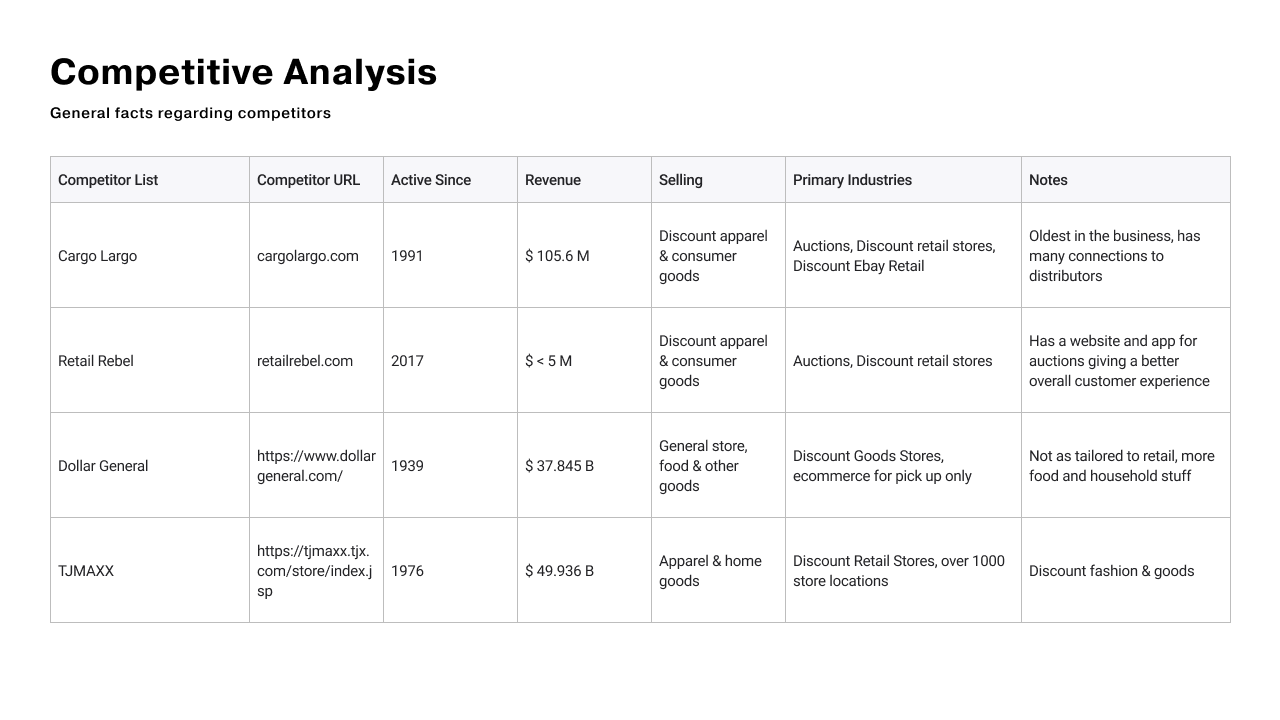
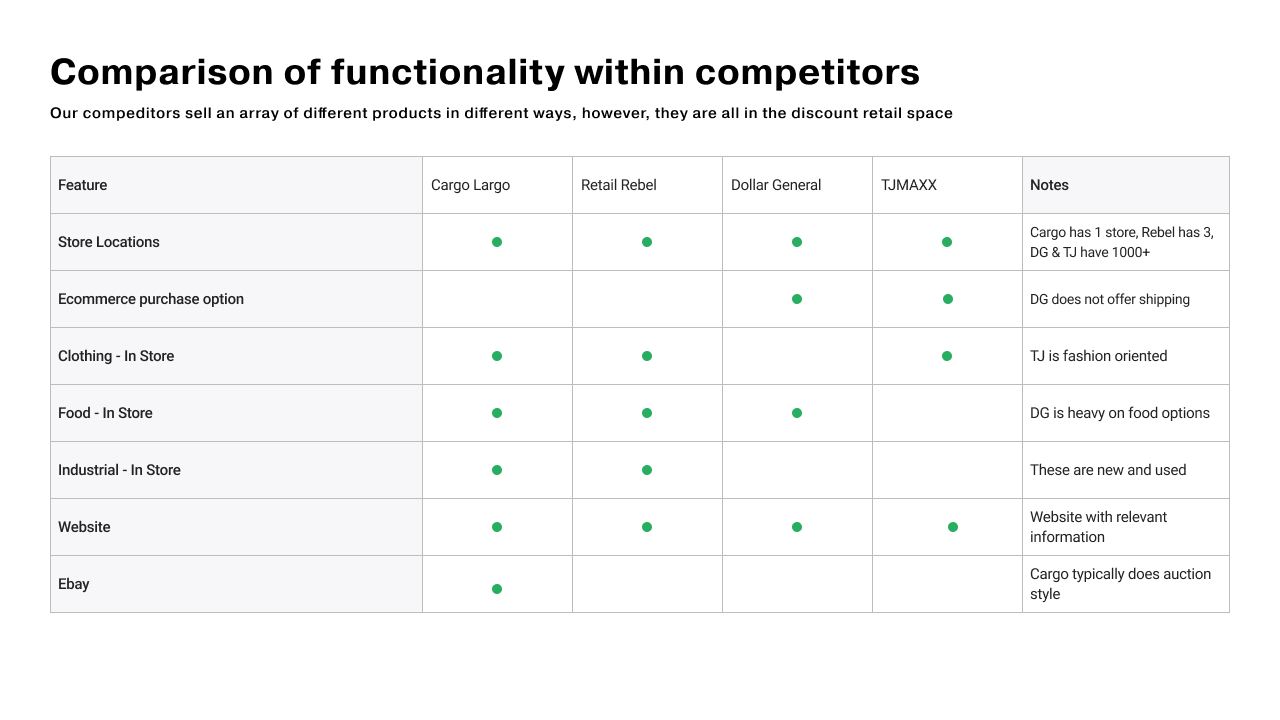
Comparative Analysis
With my analysis findings, I knew there was space to bring in an e-commerce option. This led me to our competitor’s websites. I found that most of the information on each website was promotional and overall more of a glimpse of their offerings and services. I thought it was very interesting that each of our competitors had multiple revenue sources. This reinforced the idea that we would need multiple selling outlets to achieve our business goals.
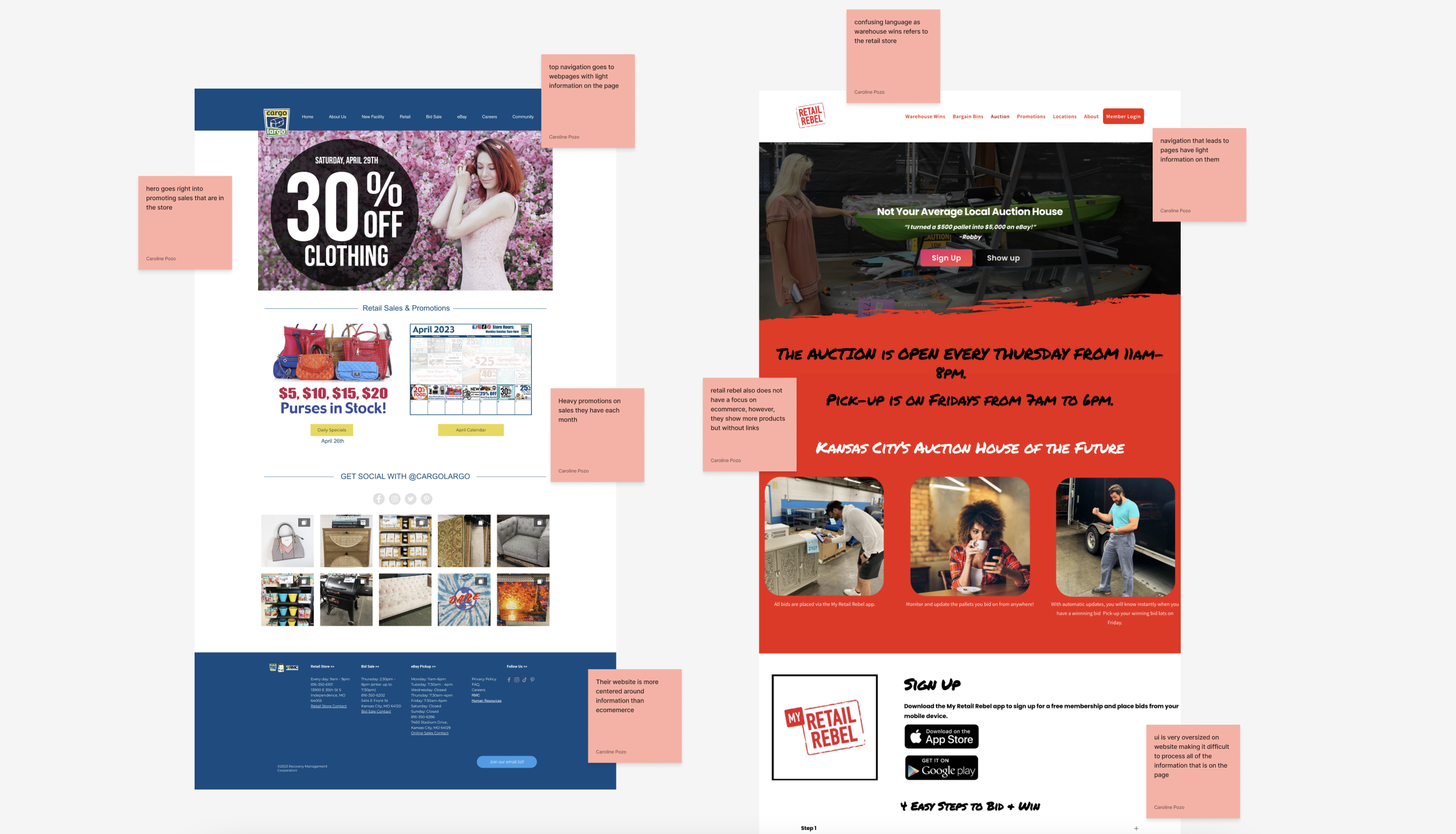
OBSERVATIONAL RESEARCH
Buyers vary, but have common valves
While researching our competitors, I decided to do some observational research which included going to their physical locations to understand who their buyers where. My key take away was that customers were tremendously diverse. This is a common trend we also see throughout our ebay buyers.
DEFINE
Target customer & their values
Through my research, I was able to hypothesize who our primary target customers and users were, what was important to them, and what drove them to ultimately make a purchase. My goal was to target budget friendly shoppers, millennials and gen zers, and bargain hunters. Some of our target customers values include price, efficiency, and flexibility.
Target customer: Budget friendly shoppers, millennials and gen z, and bargain hunters
Values: Price, efficiency, and flexibility
Key Notes: Will conduct product research to find the best deal, this will include searching products on different sites
HYPOTHESIS
Because of our wide array on products, I suspect people will find us through specific searches queries.
This is important because the products drive the design of the site and are directly linked to how we reach our customers. If this hypothesis was correct, we will see traffic coming to the site through direct product links rather than through the home page. It could also indicate that customers might be less likely to browse our site and purchase other items along with their orders.
Note: Our products range in categories, niches, and size. We have some products less than a pound and some products that are freight shipping. With that being said, Bargaineer's inventory is highly randomized.
IDEATE
I sketched primary page layouts with specific sections. The end goal was to maximize conversions.
E-commerce has best practices in place, which I kept in mind when sketching ideas for the store. There were multiple things to consider such as our product categories, how clients would learn about us, social proof, and our add to cart.
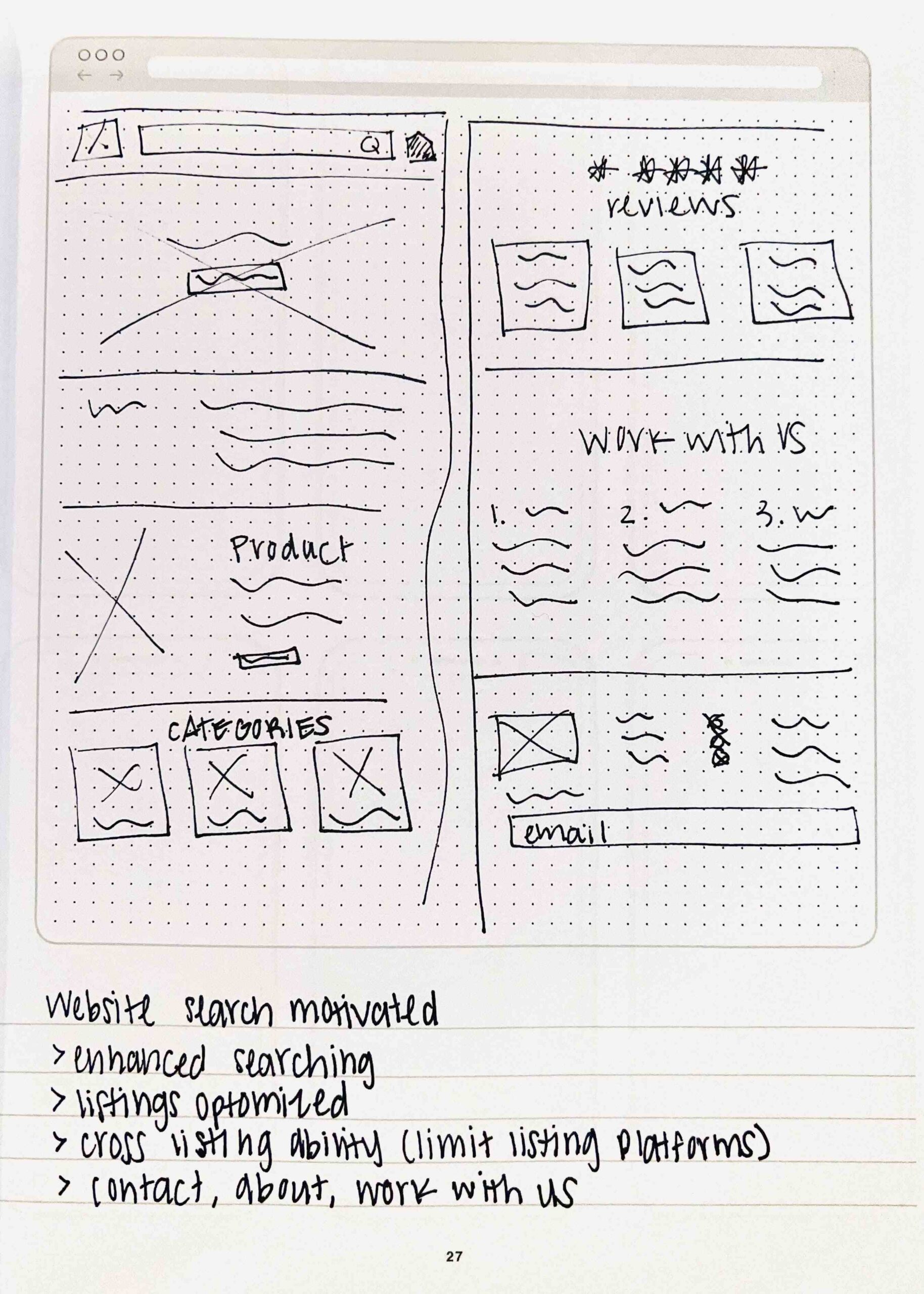
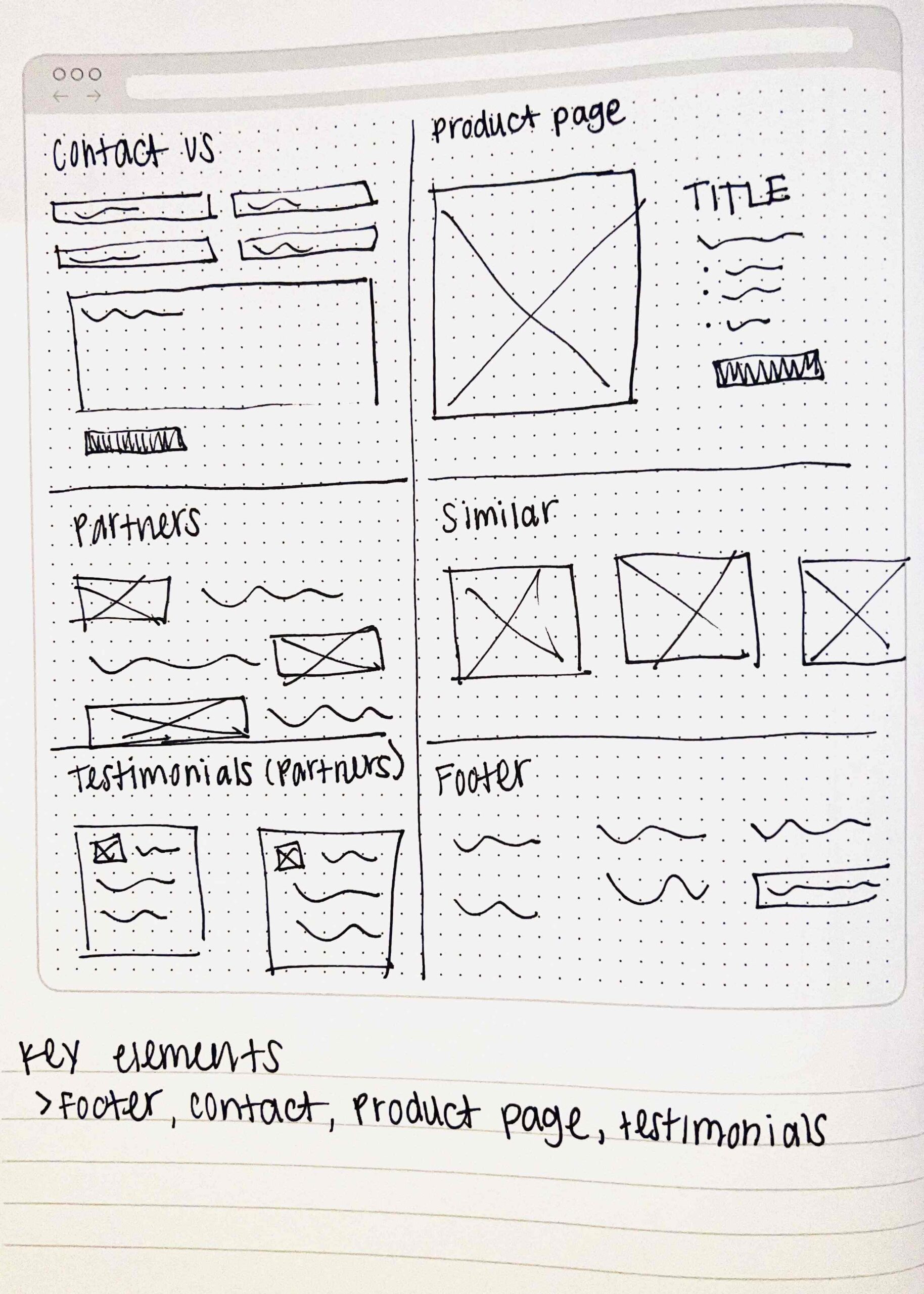
BUILD
Building an MVP to begin customer recognition
Since Sale Boat did not have a viable website for its customers and potential business partners, I needed to balance business goals and design. I worked with a cross-functional team of management, operations, and accounting to ensure we covered all of our bases. Overall, I launched our MVP and saw an increase in revenue and a new audience sector emerge.
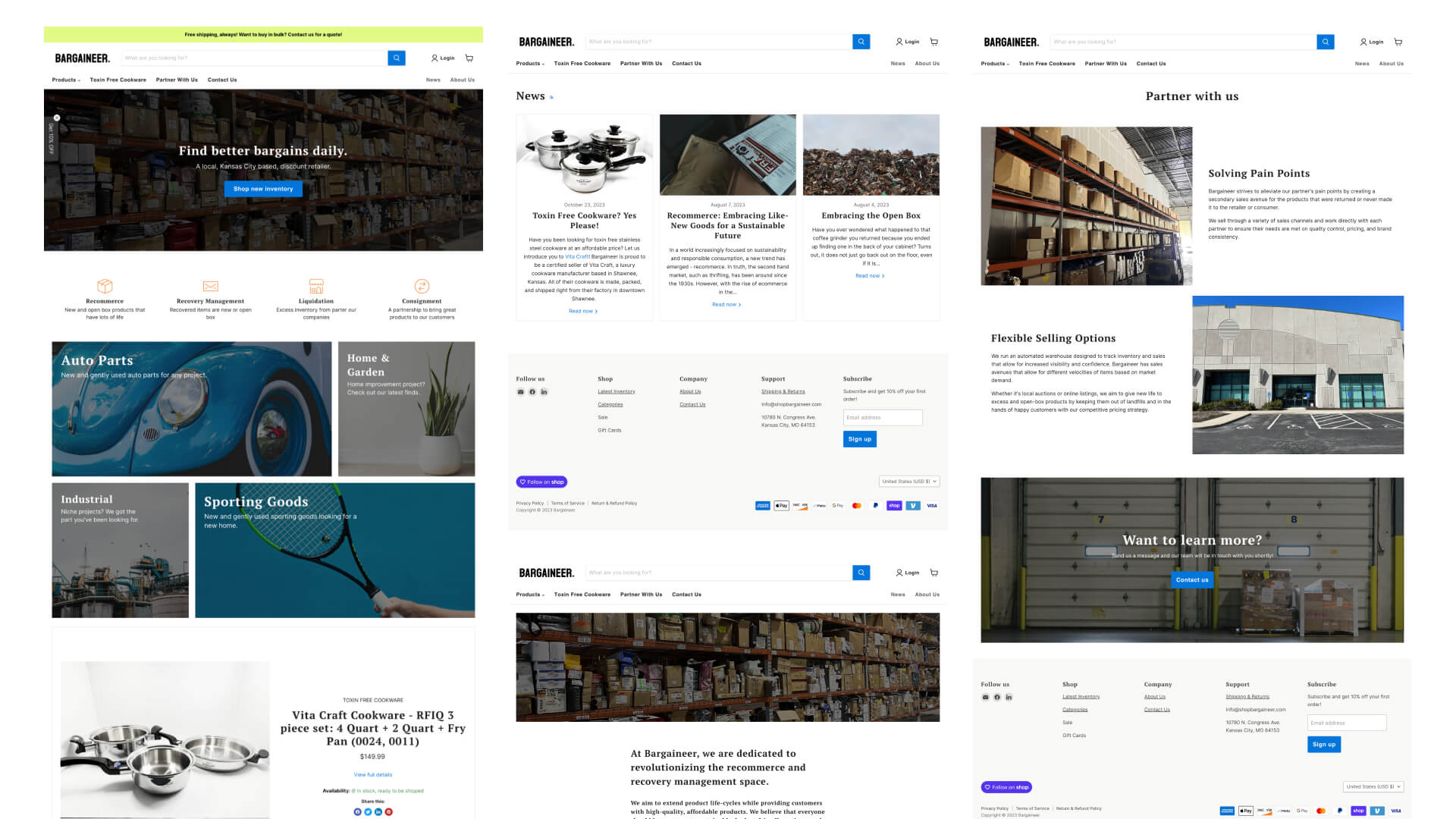
DATA
Product focused, one item purchasers
After launching the site, I was able to monitor site data. Something that was notable was the fact that we saw a significantly high number of product queries and single item purchases. This indicates that people found us through specific product searches and purchased the product they needed. This makes sense due to our highly randomized vast inventory.
INTEGRATIONS
The website meets the new warehouse management system
Part of the challenge of Bargaineer was learning the best way to manage the 2,000+ items along with tracking their quantities. There were a few work arounds done before implementation of the WMS system, but after some time, we were able to combine our website with the system to track orders, shipments, and quantities seamlessly. For this, I worked with our warehouse manager and operations specialist to ensure everything connected smoothly.
MERTRICS
Through this one addition, I enabled Bargaineer to see an ROI of 500%+
Not only did the addition of a website help us reach more customers, but it also allowed us to cross list products, manage inventory, and open a showroom where customers could purchase products at our physical location. Within 6 months, we could seamlessly track, ship, and manage our extensive inventory through our e-commerce platform. Within 6 months, I took the website from 0 to:
Users:12k Event Count: 87k Check Outs: 455
FEEDBACK
Through user and stakeholder feedback, I could uncovered where the MVP needed the most improvement.
Stakeholders had positive reactions to the MVP and were excited to reach a new audience. Users typically brought up product information as something that could be improved.
Takeaway: Listing optimization was brought up multiple times and is next on the to-do list.